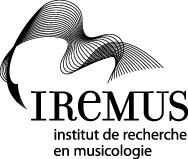WRITINGS
FUJII Koichi / 藤井 興一
A Financial Source or Opportunities for Experiments? Musique concrète in Japanese film music in the 1950s and 60s
Edition: Proceedings of the Electroacoustic Music Studies Network Conference, Paris, 2008, on line: http://www.ems-network.org/ems08/abstract.html.
Date: 2008
Region: JAPAN
Origin: FRANCE
Type of media: Abstract
Language: English
Editor: M.B.
Comment:
Abstract:
In studying Japanese contemporary music, film music is certainly a genre to be reckoned with, not to be neglected. Many composers of “serious” music in Japan have composed music for films quite actively. This genre, particularly in the nineteen fifties and sixties, was important as it provided them not only with their a financial source but also with opportunities for experiments including those of music technology. In an aesthetic viewpoint, this is related to the Japanese interdisciplinary avant-garde movement in the same period. This presentation illustrates an aspect of Japanese film music in connection with music technology, particularly musique concrète, focusing on Toshiro Mayuzumi (1929-97) and Toru Takemitsu (1930-96). Mayuzumi had composed tape music for films just before his x, y, z (1953), which is officially recognized as the first musique concrète by Japanese composers, and Shichi no Variation (Variations on the Numerical Principle of 7) (1956) in collaboration with Makoto Moroi (1930-), which is considered as the first full-scale electronische Musik by Japanese composers. Takemitsu experimented tape collages of Japanes instruments’ sounds in Seppuk [Hara-kiri] (1962) and Kwaidan [Ghost Stories] (1965) directed by Masaki Kobayashi (1916-96), and the TV drama series Minamoto Yoshitsune [Yoshitsune Minamoto] (1966) directed by Naoya Yoshida (1931-). These experiments were fruitfully led to one of his masterpieces November Steps for biwa, shakuhachi, and orchestra (1967) commissioned and premiered by New York Philharmonic. Additionally, the excerpt from Suna no onna (A Woman in the Dunes) (1964) directed by Hiroshi Teshigawara (1927-2001) was revised asChiheisen no doria (Dorian Horizon) (1966). Thus, film music production and music technology used there are quite important even in undertaking investigation into the geneses or origins of instrumental pieces examining the rudiments of their original creative ideas.





